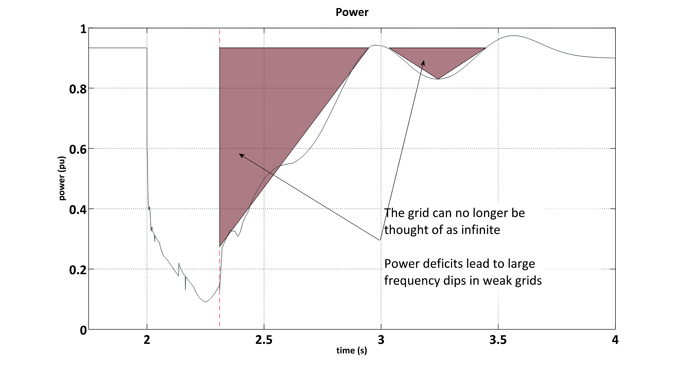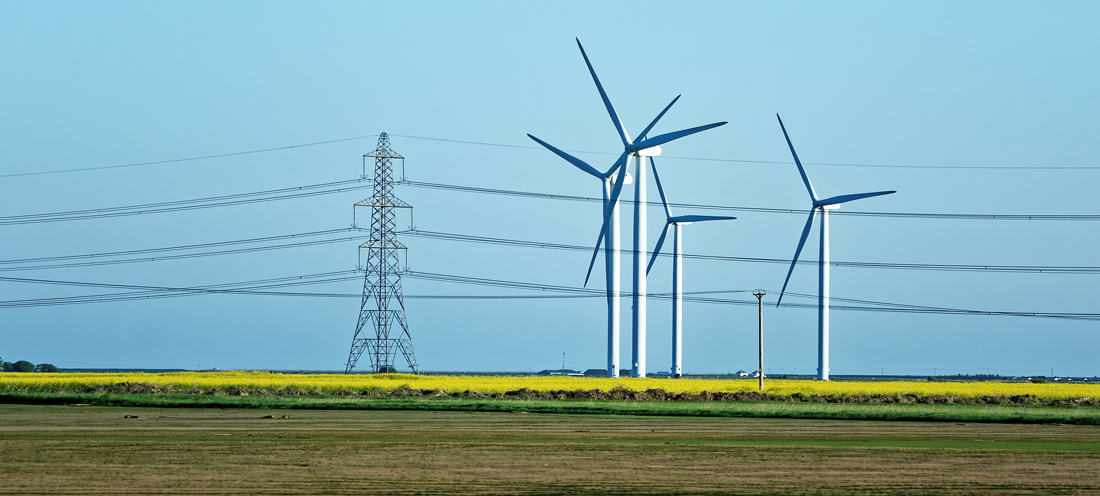As the network continues to incorporate increasing levels of inverter-based asynchronous generation such as wind and solar, connection standards in the weakening grid are tighter than ever before.
Successful grid connection is a key factor in the ability of generating plant to operate effectively and reliably, and it does not need to be a roadblock to the roll-out of new renewable generation. But connecting new solar and wind generation into a weakening transmission system can involve challenging grid connection requirements, particularly at periods of low demand.
Network faults can cause potential imbalances between network segments, and these imbalances may be exacerbated by fault ride-through (FRT) algorithms.
It is not always easy to understand the worst case from a system fault perspective. So we need to consider a wide range of system scenarios in combination with a broad spectrum of contingency events.
A number of factors are at play here, but we will focus particularly on the effect of FRT algorithms on the transient stability of the network.
When considering the connection, we tend to focus first on the stability at the connection point. This can lead to reducing the aggressiveness of the FRT algorithm to ensure FRT re-strikes are not caused by the power ramping back too quickly.
But this is where the seeds of the problem are sown. The weak voltage support at the point of connection leads us to withhold power longer during FRT to give voltage controls (remote or local) a chance to work immediately after fault clearance. In a stronger grid (even if we’re on a weak connection) this power deficit is not significant, but it can be crippling in a weak grid.

A fault forms two islands (momentarily). These two islands will invariably be unbalanced internally. That is, there will be a surplus of generation in one island and a surplus of load in the other. One island will then speed up and the other will slow down. If our inverter-based generator is in the island that is slowing down, then the withdrawal of energy by FRT makes the energy deficit in that island worse.
When the fault clears, the two islands need to re-establish synchronism. If the two islands have diverged then they may not be able to snap back to synchronism. This may lead to system separation and possible load shedding or worse.
What can be done when this occurs?
If a new connection runs into this problem as part of the connection studies, it may be able to get around it by tweaking the FRT controls. Setting these to return to normal control as fast as possible and to minimise the depth of power withdrawal during FRT will weaken the effect. Installing synchronous condensors may be another way to improve Short Circuit Ratio (SCR) at the connection point. This should allow more aggressive return from FRT.
On a network level, stronger interconnection and meshing should reduce the locations where faults can actually form the islands we’ve described here. This solution is possibly expensive, but network capability is currently the missing link in our Rules.
This is the problem we face as we move closer to the edge of the technical envelope. The capability of the network is not and has never been defined by the transmission elements alone. We’ve had generating units that have provided voltage and frequency stability. Now, those generating units are being displaced by wind and solar sources that do not provide the same levels of grid support.
This is where the interpretation of the Rules is going to be a threat to further renewable penetration. When assessing a new connection we routinely look for dispatch scenarios that will test the limits of grid strength. If the new connection can’t meet an appropriate standard of performance, we determine that it is this new connection that is at fault. Sometimes this is true, but sometimes it’s just that connections that came before have soaked up the available system strength.
On one level, this is an appropriate response. The new connection should not be allowed to connect if it can’t meet an acceptable negotiated level below the automatic access standard. On the other hand, it seems that the network resource is not being equitably shared. That is, people ahead in the queue have been given more than what we now understand to be a fair share.
We’re not suggesting a reallocation of those shares. That’s impractical. Nor are we suggesting that earlier connection agreements were ill-advised. We, as an industry, just know more now about how valuable and scarce network strength can be.
How will this affect future connections?
Ultimately we need a reasonable approach to negotiated access standards. Perhaps there’s a need for an adjustment to minimum access standards too. It is not practical or fair to expect that that burden be shouldered by new connections alone. Nor is it practical or fair to renegotiate the connection standards of existing plants. If we are to continue to add non-synchronous generation, we will need alternative sources of grid strength.


